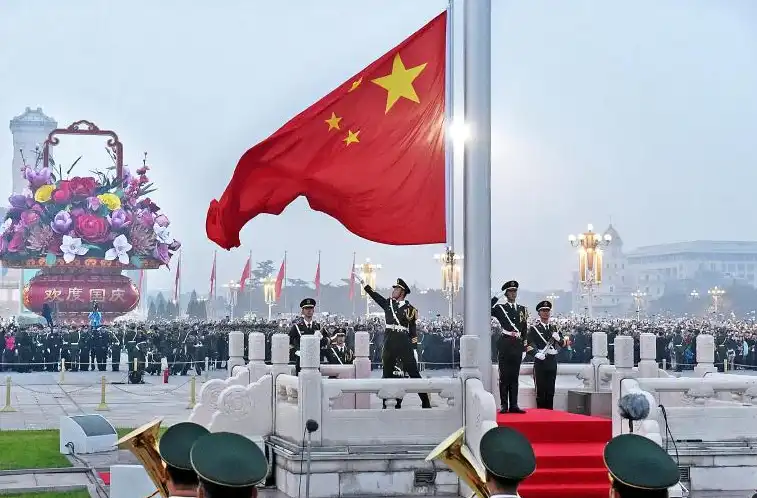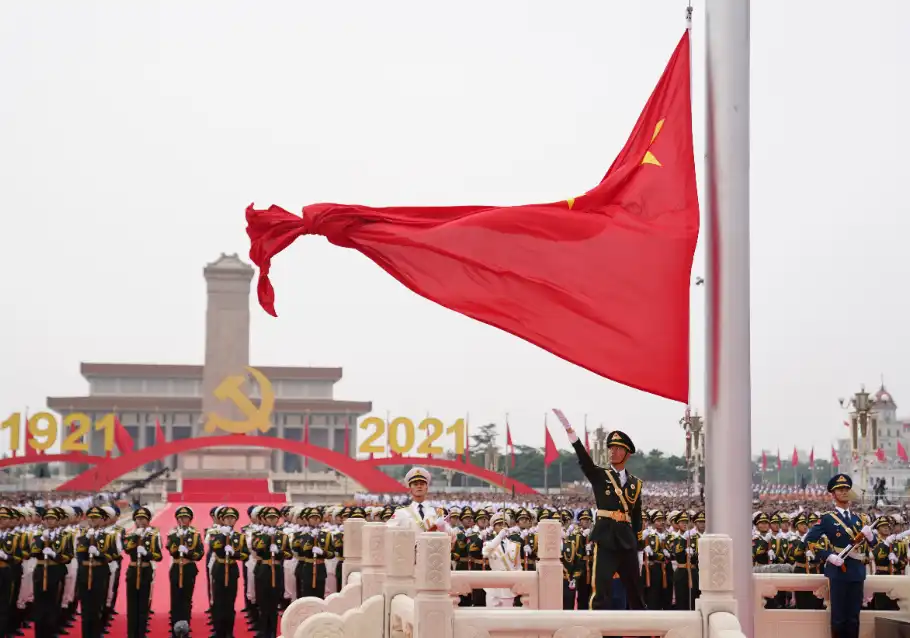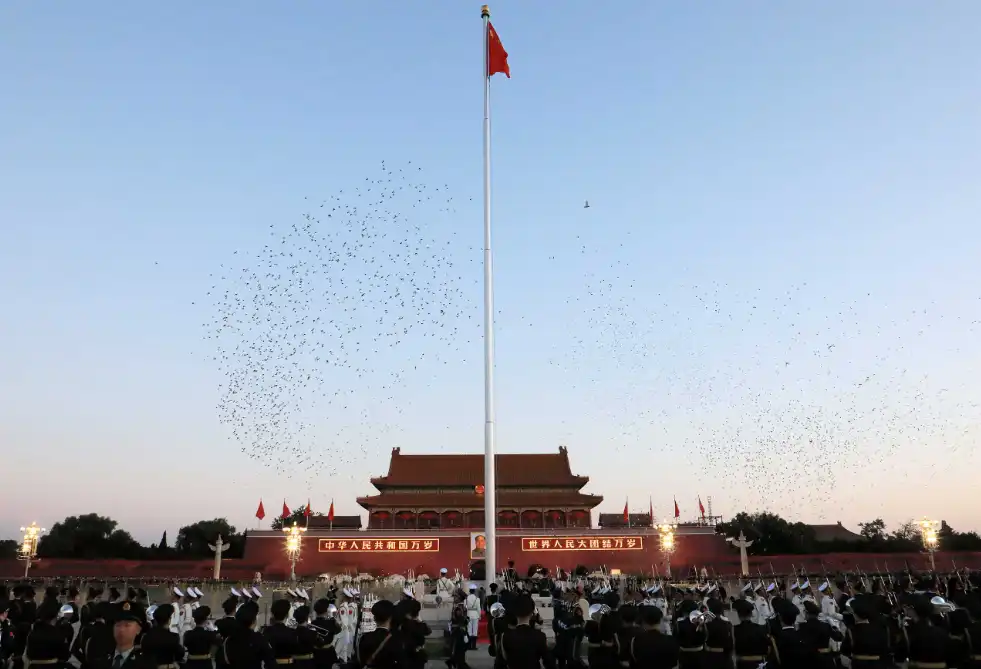Five-star red flag, 28.3 meters of glory and inheritance
A flag is a national symbol, a mark of the nation’s spirit. Whenever it flutters in the wind, it seems to tell of the nation’s glory and history.
Of all the flags, the five-starred red flag is undoubtedly the most representative and profound. It is not simply a piece of red cloth with five stars on it, but a symbol of the Chinese nation's arduous journey from humiliation to rejuvenation.

Standing in Tiananmen Square, watching the national flag rising slowly, our hearts are filled with pride and respect.
Observant people may notice that the flag was not raised all the way to the top of the mast but instead stopped at a height of 28.3 meters. Though seemingly unremarkable, this detail holds profound significance.
To learn the story behind this, we need to start from the founding of the People's Republic of China. In 1949, the founding of the People's Republic of China marked that the Chinese people had stood up from then on.
As the national flag of New China, the five-star red flag has carried the hopes and dreams of hundreds of millions of Chinese people from that moment on. Before that, the Chinese people had experienced a century-long humiliation and struggle.
Since the Opium War, China gradually became a semi-colonial and semi-feudal society, and its national sovereignty and territorial integrity were severely damaged. However, it was during that difficult period that the Chinese nation forged its indomitable and self-reliant national spirit.

In fact, why is the national flag raised to a height of 28.3 meters? This number was not determined arbitrarily. It represents the 28 years and 3 months of arduous struggle from the founding of the Communist Party of China in 1921 to the founding of the new China in 1949.
This is a history full of sacrifice and struggle, the fruit of victory bought with the blood and lives of countless revolutionary martyrs. These 28.3 meters represent not only a tribute to that period of history, but a remembrance of our martyrs as well.
China today is no longer the China that could be slaughtered by others, but has become the world's second largest economy, and its international status is improving day by day.
We have a strong military force, advanced scientific and technological level, and a profound cultural heritage. The five-starred red flag not only flies high in China but also demonstrates China's style and strength on the international stage.
After all, all of these achievements have not come easy. As descendants of Yan and Huang, we must always keep in mind our history, never forget our original intentions, and continue to move forward.
The height to which the national flag is raised is not just a number, but also a symbol of spiritual inheritance and inspiration. It reminds us to cherish our happy life today, and to strive even harder for the rejuvenation of our nation.

In my opinion, these 28.3 meters are more like a historical scale, measuring every step China has taken from humiliation to revitalization.
Every time we see our national flag raised to this height, we should feel a deep sense of pride and responsibility. Pride in our nation's ability to rise above adversity, and responsibility to continue to inherit and carry forward this unyielding, self-reliant national spirit.
This detail also reflects our respect and awe for history. History is the best textbook, and it records the growth and changes of a nation.
By remembering history, we can better understand the present and plan for the future. Therefore, setting the height of the flagpole at 28.3 meters is not only a tribute to history, but also an expectation and commitment to the future.
The height of the flag raising ceremony at Tiananmen Square may seem like a mere detail, but it carries profound historical significance and spiritual connotations. As descendants of Yan and Huang, we should profoundly understand and inherit this spirit and strive to realize the great rejuvenation of the Chinese nation.
